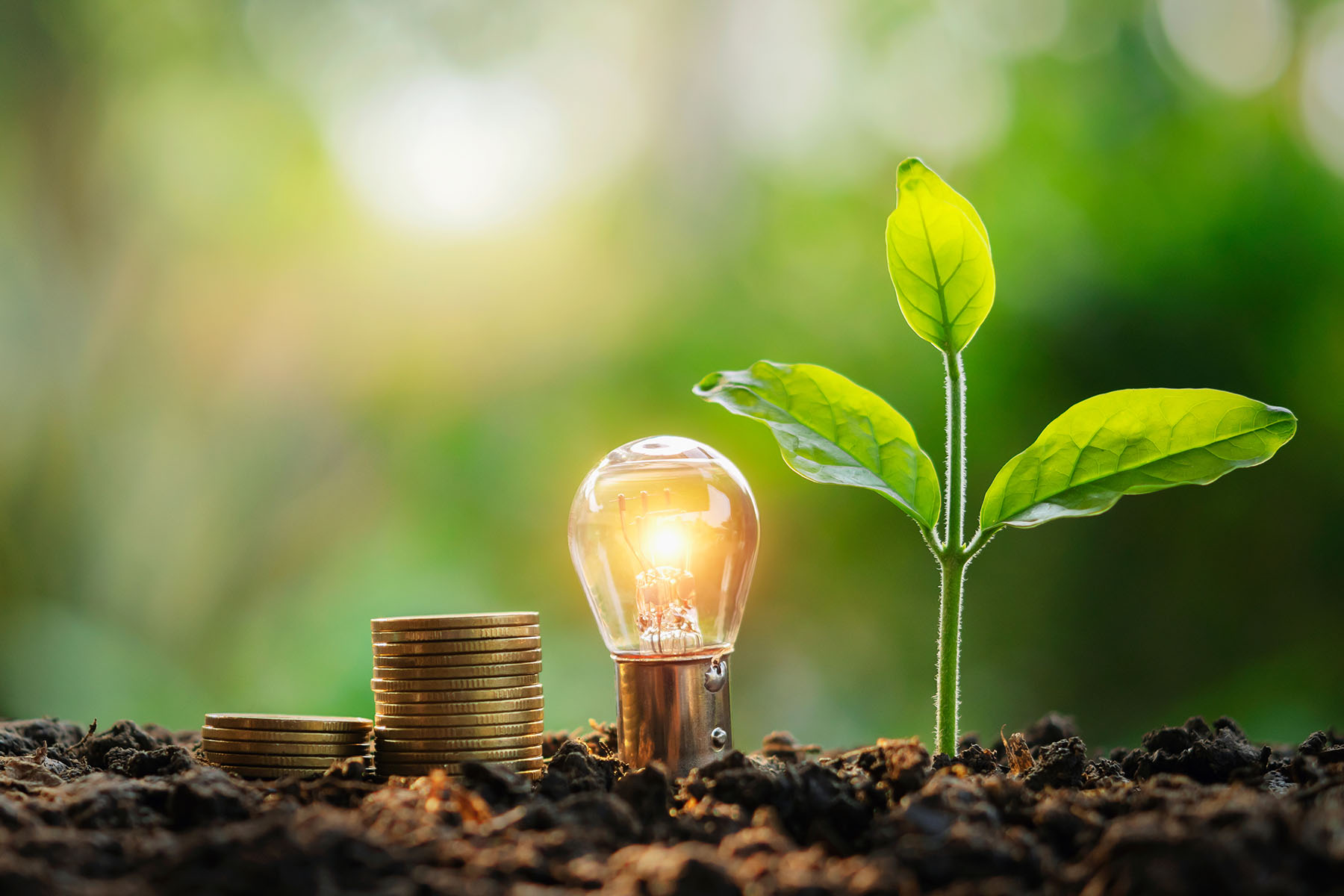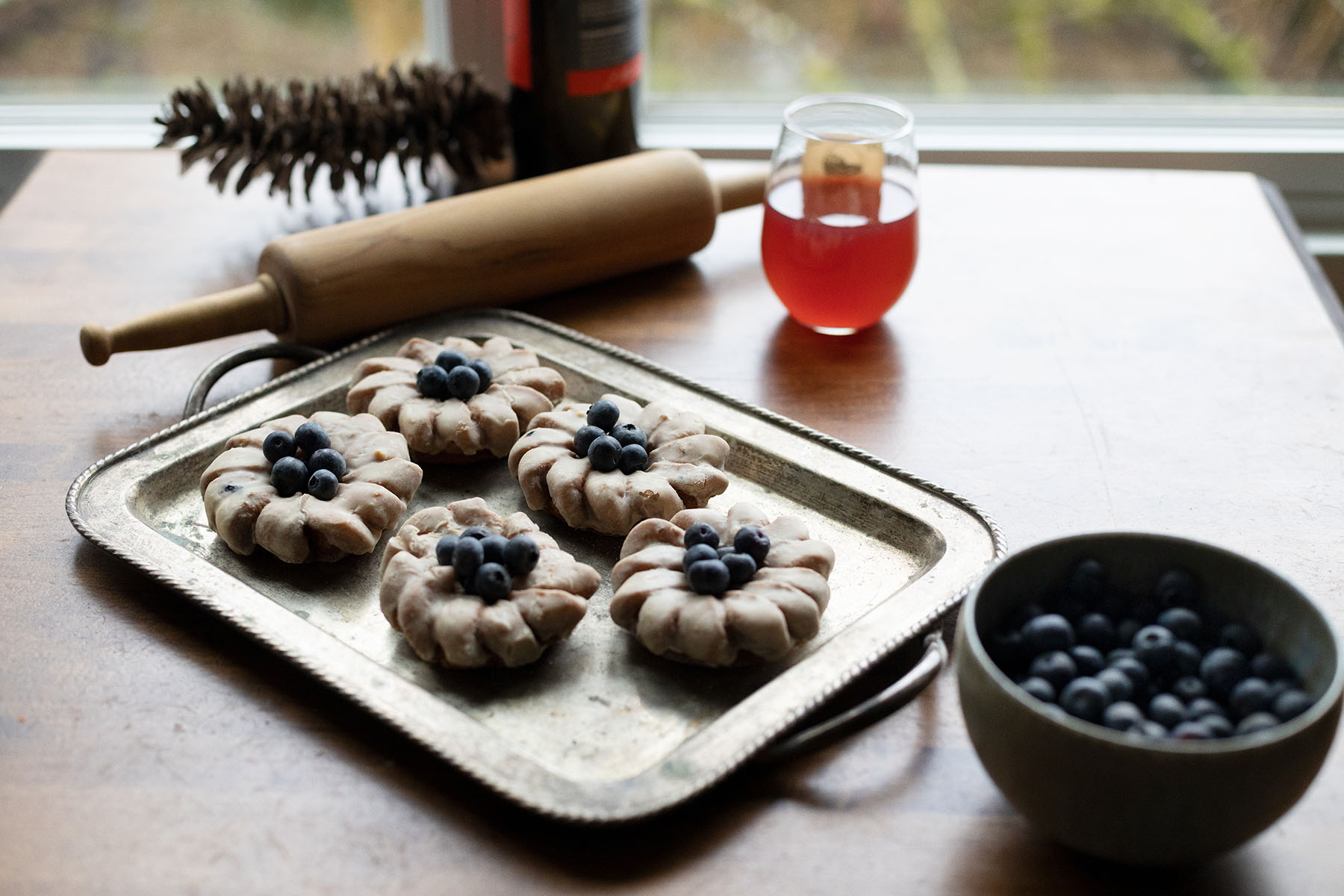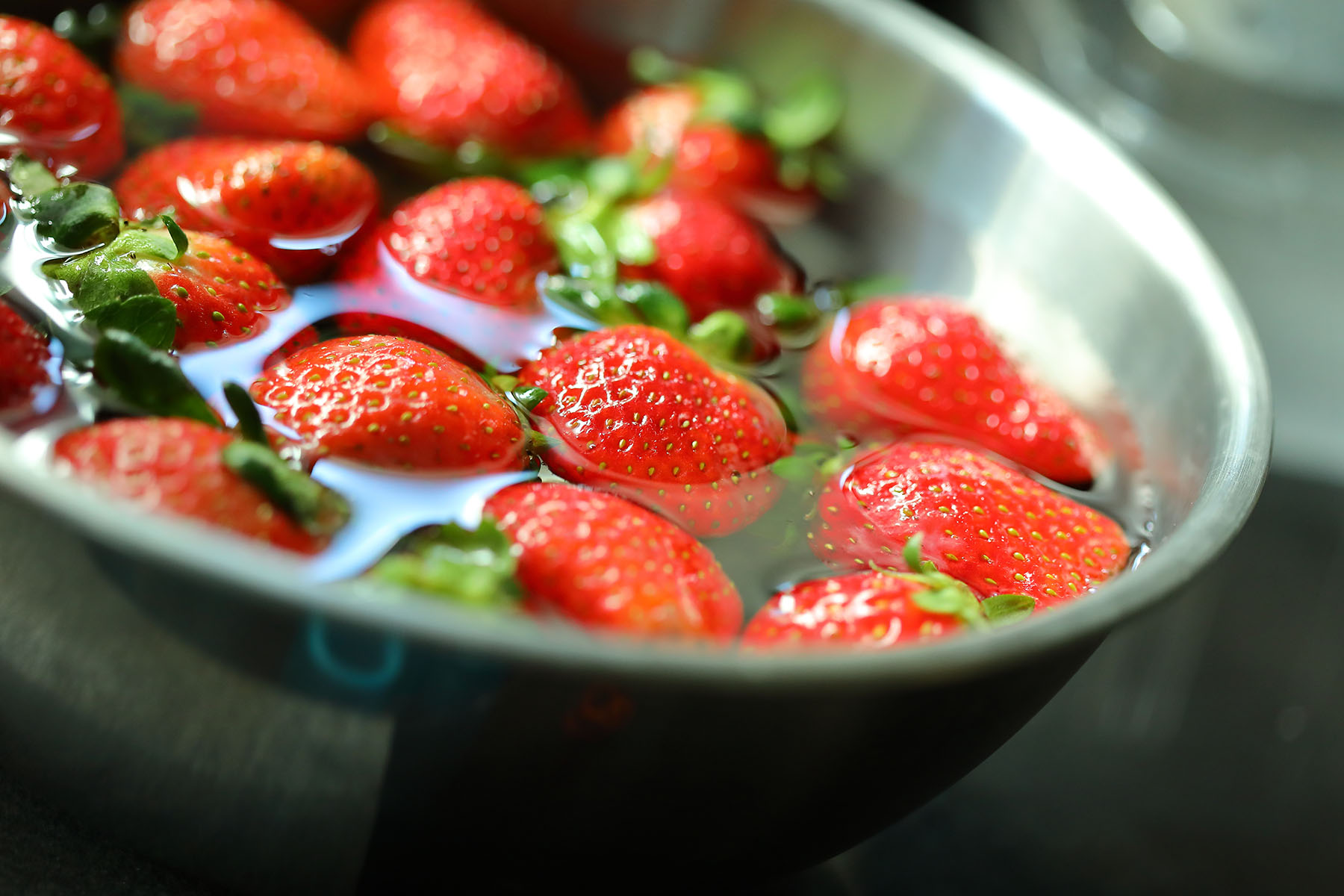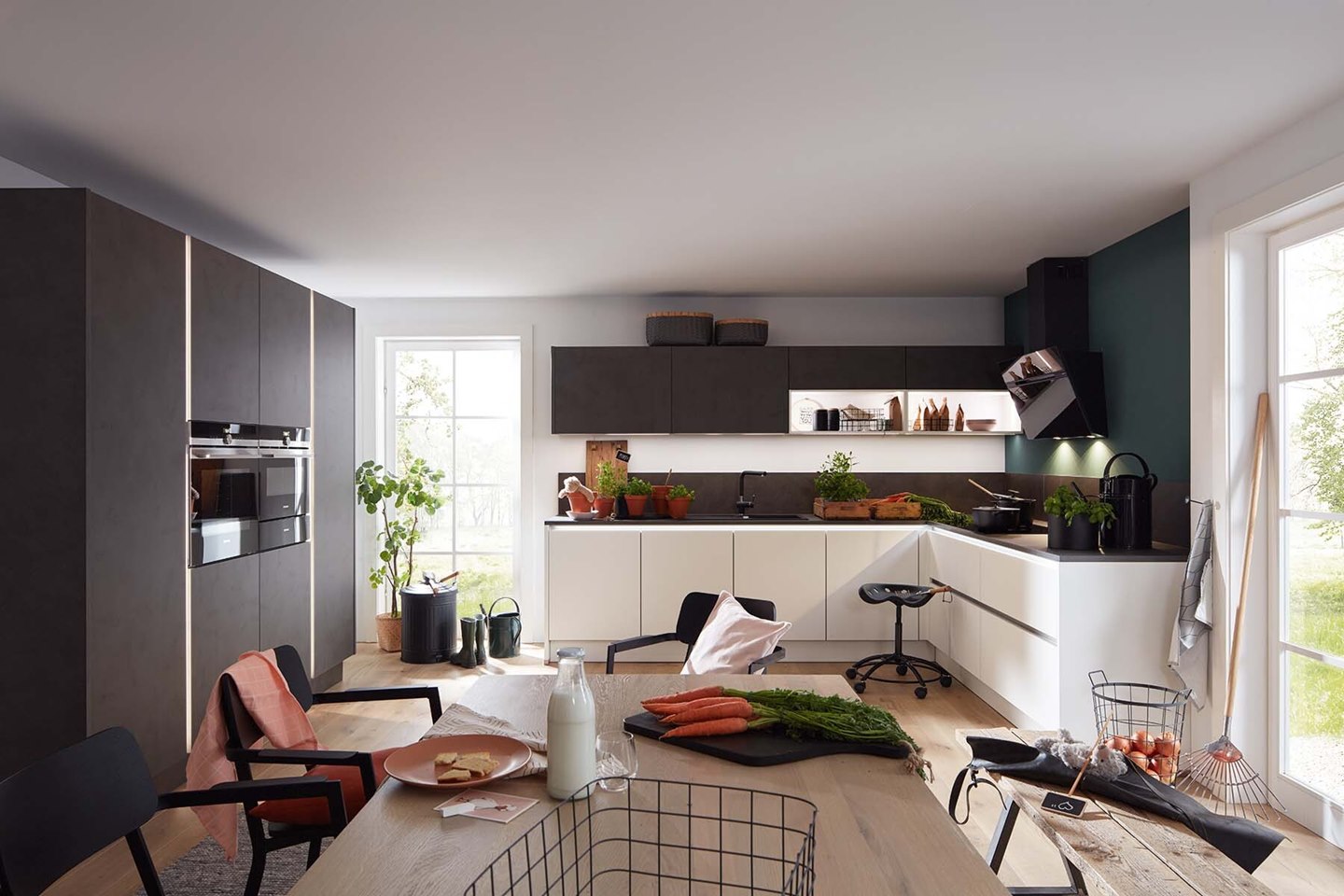The 3 most important energy-saving cooking tips
Modern kitchen appliances are a key factor in using energy efficiently. Yet there are a few other measures that can help to go easy on your purse strings and our environment.

1. Choosing the right cookware
Over time, pots and pans wear out and warp. Which means they automatically use more energy. If the bases of ageing pots and pans are no longer perfectly flat, they don't sit properly on the hob, resulting in higher energy consumption.
When choosing cookware, it can also be worthwhile to go for dark metals (like cast iron and copper) as these shorten frying and baking times. So, choose these over ceramic and glass dishes. Light-glazed ceramic as well as glass dishes are poor heat conductors which means they take more time to finish cooking or baking a dish or cake – and so use more energy
2. Choosing the right size and shape of cookware
It's not only cookware colour and material that play a key part in optimising energy efficiency. It's also essential for a pan to match the size of the hot plate. If cookware is smaller or larger than the hot plate, you will use unnecessary energy.3. The right lid for every pot and pan
Lid size also plays an important part in optimising energy use. Regardless of the cooker you use: if you don't put a lid on, you'll use about three times the amount of energy. Ideally, the lid should provide a perfect fit.Energy-saving cooking3 efficient ways to cook
1. Slow-cooking
Slow-cooking not only conserves energy, it also retains more vitamins and nutrients despite food being heated. An inch of water is usually enough to steam potatoes, eggs or vegetables.
2. Steaming
Steam cooking comes with immense advantages, and not only because it lets you cook several dishes at one and the same time. Generated by the appliance, the moist, hot air it generates really does get the heat into food better than dry, hot air does, which is the case in an oven. An oven needs far higher temperatures to cook our food through. Steam, on the other hand, penetrates the food much faster and more intensely without burning it. This not only saves energy, but vegetables keep their crunch, meat its juiciness, and it enables them to retain their colour.3. Pressure-cooking
The principle behind a pressure cooker is quite simple: steam and pressure in the vessel cook the food more quickly while saving energy.
The beauty of a pressure cooker lies in the fact that the hot steam cannot escape. The energy is stored in the heated water and pressure rises to around 1.8 bar. This means the temperature inside the pressure cooker can reach up to 120 °C in a short time.
Applied correctly, you can look forward to energy savings of up to 50 per cent when using a pressure cooker. Important, though, is for the bottom of the pressure cooker to be flat and fit the size of the hotplate exactly.

Using energy properly when baking and cooking
Baking at the right temperature
Modern ovens come with fan assistance. Use it whenever you can because it saves energy: fan assistance lets you reduce the temperature for baking and cooking by 20-30 degrees and put several trays in the oven at one and the same time. This will save you all manner of energy!Do not pre-heat oven
Before you preheat your oven, check whether it's really necessary. Many dishes don't need a preheated oven.Use residual heat
When baking or cooking: before removing the baking tray, reduce oven temperature or switch off completely after cooking/baking for 5-10 minutes and continue baking/cooking using the heat left inside the oven. This usually provides enough heat to make any dish turn out well.Warming snacks and beverages in the microwave
Small dishes and beverages can be heated in the microwave, why not? In most cases, doing it this way uses much less energy than on a cooker.The right way to keep and defrost food
Storing food sustainably
Not only cooking, but also storing food can be done in a way that's sustainable. It's best to store your food in an environmentally friendly way in reusable containers made of glass, stainless steel or ceramic. Less advisable is to store food in aluminium foil or cling film, as these options are not particularly eco-friendly: mining and processing aluminium in particular pollutes the environment and also uses vast amounts of energy. Moreover, storing food in reusable containers is not only kinder on the environment, it also keeps food fresh for longer than in aluminium foil and cling film.
To avoid having the refrigerator running on full blast to keep contents lovely and fresh, you can easily use your outdoor space to keep food and veg chilled during the winter months. This way, you save space in the refrigerator, leaving it to use less energy to keep food chilled.

The right way to defrost food
It is not always necessary to use the microwave or the oven's defrost function to thaw out frozen food. Quite the opposite: food defrosts much more gently in the refrigerator and also releases cold into the fridge, thereby saving energy.
Incidentally, this is why hot food should always be allowed to cool down completely before it is stored in the refrigerator.

5 bonus tips for energy-efficient cooking
1. Saving energy washing fruit and vegetables
Even before you start cooking, there's something you can do to save resources: ideally, never wash fruit and vegetables with the tap running, but rather in a bowl filled with water or in the sink. This saves no end of valuable drinking water.2. Best thing to do is pay attention to the energy label
Energy labels for kitchen appliances can be a fantastic guide. Here, appliances are rated from A to G on the efficiency scale. This makes it quicker and easier for consumers to identify energy-efficient appliances. The QR code on the new energy label provides a very easy means to identify every appliance via the EU's EPREL database. Furthermore, you can also find products by hand by entering the article number in the database.3. Using induction hobs
Anyone wishing to find an alternative to a conventional ceramic hob and cook by induction instead will save up to a quarter of the energy used. Induction hob cookers heat up faster and use less energy than hobs that radiate heat. That pays!4. Using LED light
The fact that LED lighting is significantly more energy-efficient than conventional light sources, such as filament bulbs, halogen lamps and the like, is probably no secret. But did you know that you can even save up to 80 per cent of the electricity that goes on lighting? You can also use this gain when planning the lighting for your kitchen. Switch to LED – the environment and your wallet will thank you.5. Using smart control systems
Ever heard of a smart kitchen? Cutting-edge smart home technologies make it possible to automate all sorts of everyday household processes and match them to personal home life needs. Not only that: the kitchen's energy consumption can be slashed too. One example: temperatures, lighting etc. can be controlled automatically to suit actual needs, avoiding unnecessary energy consumption. Also a good idea when purchasing kitchen appliances: some appliances, like coffee machines and kettles, switch themselves off after a certain period of time, avoiding unnecessary stand-by operation.SAVING ENERGY WHEN COOKING ISN'T ROCKET SCIENCE
Cooking is far more than a mere necessity but quality of life. That's why so many people like to spend a time in the kitchen – one more reason to bear energy consumption in mind when preparing food, cooking and baking in the kitchen and to make it as efficient as possible. Anyone cooking with an eye on saving energy makes an important contribution to protecting our environment while also saving hard cash. In short, you can say you're definitely on the mark if you cook with the right, properly functioning appliances and only use as many resources as you actually need.

